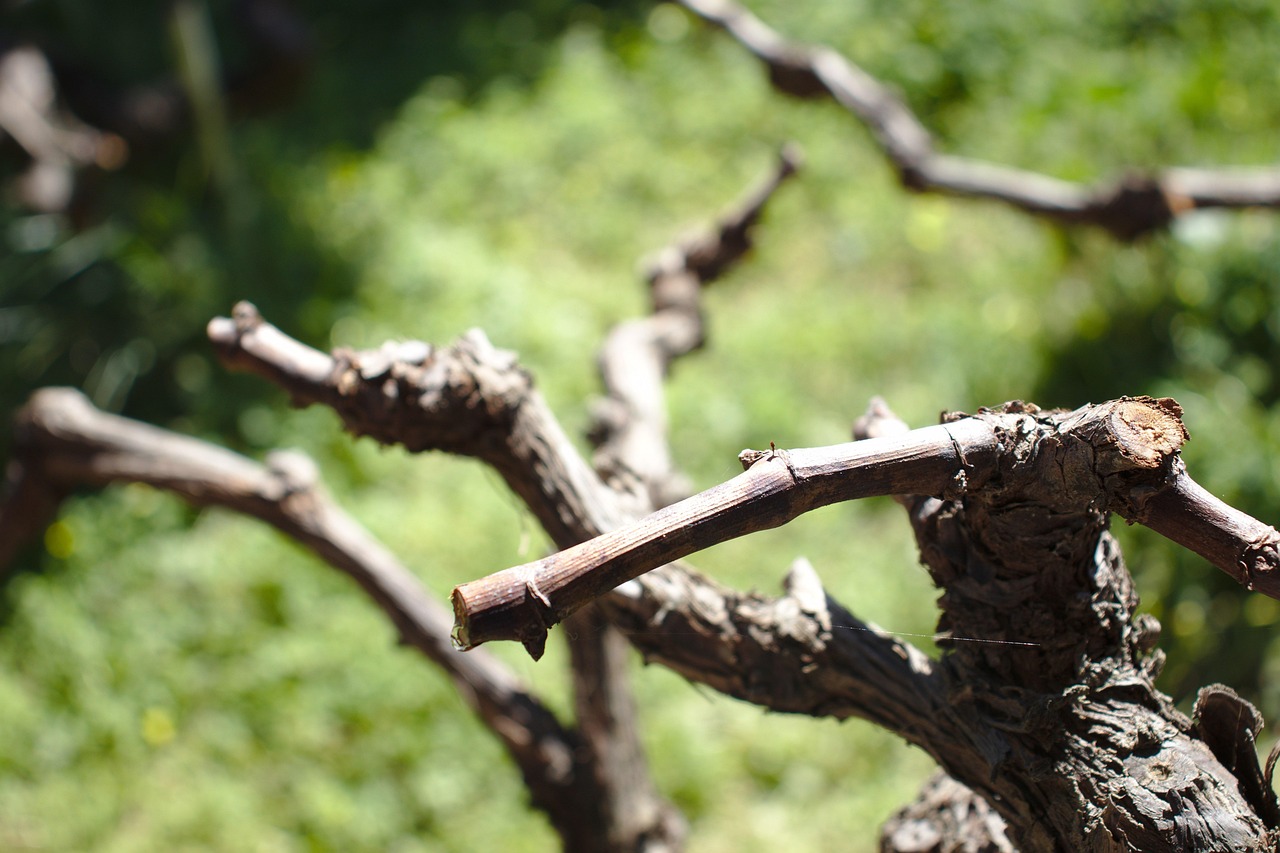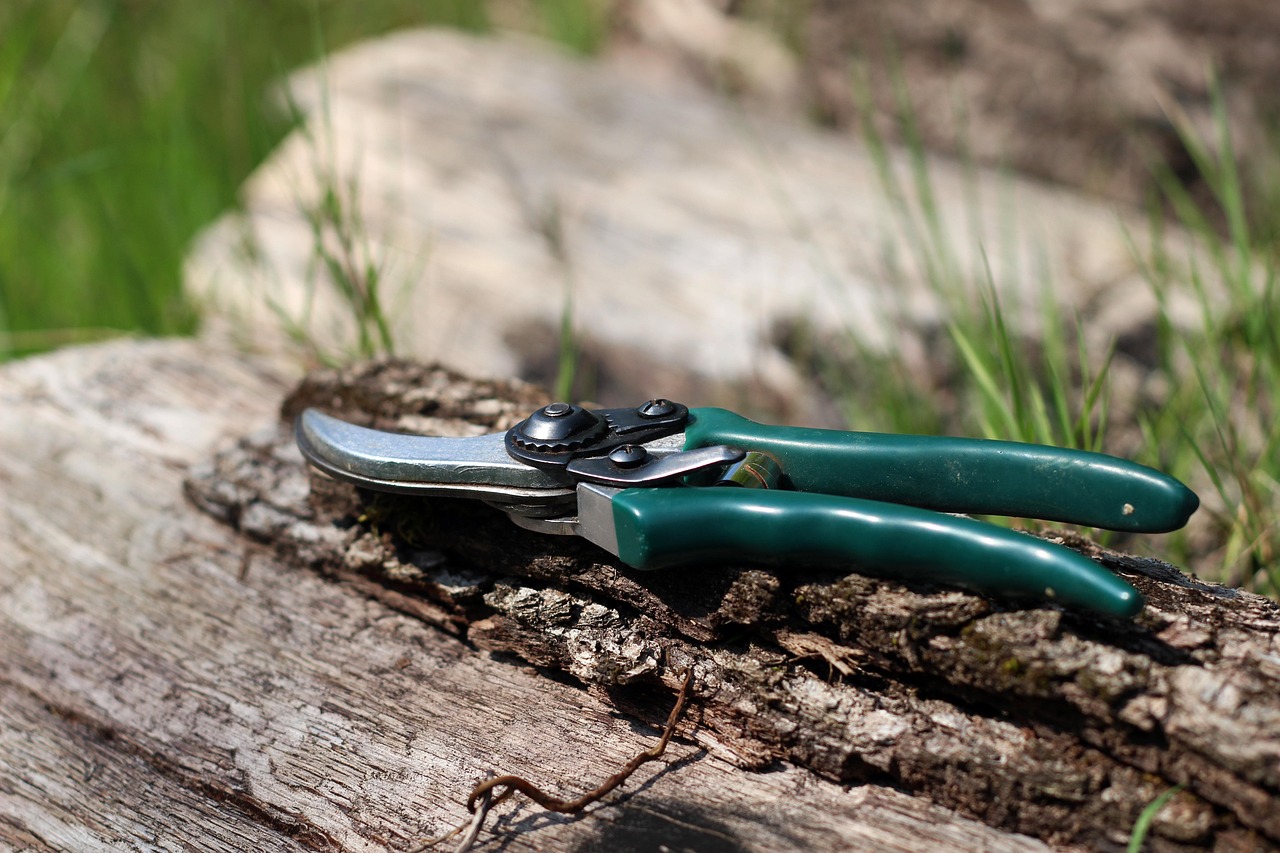Pruning is a crucial practice in commercial vineyards, enhancing grape quality and vine health. Proper techniques promote growth, improve sunlight exposure, and maintain manageable plant size, ultimately leading to better yields and fruit quality.
Understanding the Importance of Pruning
Pruning is not just a routine task in vineyard management; it is an art that directly influences the success of grape production. The process involves removing specific parts of the vine, such as branches, buds, or even roots, to encourage healthier growth. This practice is essential for several reasons.

Firstly, pruning helps control the size and shape of vines. In commercial vineyards, maintaining an optimal vine structure is vital for maximizing sunlight exposure. Sunlight plays a significant role in photosynthesis, which is crucial for producing high-quality grapes.
Secondly, removing excess foliage allows for better air circulation within the vine canopy. Improved airflow reduces the risk of diseases caused by excess moisture and humidity. Healthy vines are less susceptible to pests and diseases, which can threaten the entire crop.
Moreover, proper pruning techniques can enhance grape quality. By selectively removing certain buds or clusters, vineyard managers can focus the vine’s energy on producing fewer but more flavorful grapes. This targeted approach often results in higher quality wine production.

Pro-Tips and Common Mistakes to Avoid
- When I first started pruning, I underestimated the importance of timing. I learned that pruning too early or too late can stress the vine or reduce bud viability. Now, I always prune during the dormant season, when the vine is truly at rest, to minimize stress and promote healthy spring growth.
- Initially, I tended to over-prune, removing too many buds and leaving the vine weak. Over time, I realized that leaving enough buds—usually 1-2 per spur—helps maintain balanced vigor and prevents overcrop overload.
- I’ve made the mistake of ignoring the vine’s overall health before pruning. Now, I assess each vine’s vigor and look for signs of disease or damage. Pruning healthy vines differently from stressed ones yields much better results.
- At first, I didn’t pay enough attention to the specific needs of different grape varieties. Learning their growth habits and adjusting pruning techniques accordingly has made a noticeable difference in grape quality.
- When I started using dull tools, my cuts weren’t clean, leading to faster healing and increased disease risk. Investing in sharp pruning shears and maintaining them is a simple but crucial step I now never skip.
- I used to prune without a clear plan, leading to uneven growth. Now, I develop a pruning strategy based on vine age, variety, and seasonal conditions, ensuring consistency across the vineyard.
- Not monitoring post-pruning can cause problems. I always keep an eye out for pests or disease signs after pruning and take quick action to protect the vines’ recovery.
- Finally, I learned that rushing the pruning process or trying to do too much at once can lead to sloppy cuts and mistakes. Taking my time and working systematically helps ensure clean cuts and healthy growth.
Types of Pruning Techniques
There are several techniques used for pruning grapevines, each with its own advantages and best use cases. Understanding these methods can help vineyard managers choose the right technique for their specific situation.
| Pruning Technique | Description | Best For |
|---|---|---|
| Cane Pruning | Involves cutting back vines to one or two-year-old canes. | Varieties with high vigor. |
| Spur Pruning | Short spurs are left on the vine to produce new growth. | Lower vigor varieties. |
| Summer Pruning | Involves light pruning during the growing season. | Controlling growth without affecting yield. |
| Hard Pruning | Severe cutting back to promote new growth. | Old or unproductive vines. |
Timing of Pruning
The timing of pruning can significantly impact vine health and grape production. Generally, there are two main periods for pruning: winter (dormant) and summer (growing season).
Winter pruning typically occurs when the vines are dormant. This is the ideal time to prune as it minimizes stress on the plant and allows for robust growth in the spring. During this period, vineyard managers can assess the vine’s structure and make informed decisions about which canes or spurs to remove.

Summer pruning, on the other hand, focuses on managing vine growth during the active growing season. This technique is less invasive and aims to control canopy size and improve air circulation. It is beneficial for removing unwanted shoots and ensuring that sunlight reaches developing grapes.
Factors Influencing Pruning Decisions
Several factors can influence how and when vineyard managers prune their vines. These include:
- The grape variety: Different grape varieties respond differently to pruning techniques.
- The age of the vine: Younger vines may require different approaches compared to older ones.
- The vineyard’s climate: Weather conditions can dictate when and how much pruning is necessary.
- Pest management: Understanding pest behavior can influence pruning decisions to minimize infestations.
A successful pruning strategy requires careful consideration of these factors. Vineyard managers must be observant and adaptable to changing conditions in order to optimize vine health and grape quality throughout the growing season.

Tools and Equipment for Pruning
The right tools make all the difference in effective pruning. Here are some essential tools used by vineyard managers:
- Pruning Shears: Essential for making clean cuts on branches.
- Loppers: Ideal for cutting thicker branches from vines.
- Saw: Useful for larger cuts that cannot be handled by shears or loppers.
- Gloves: Protect hands while working among thorny vines.
Using sharp tools is critical for making clean cuts that promote faster healing and reduce disease risk. Vineyard managers should always maintain their equipment to ensure efficiency during the busy pruning season.
Pruning Techniques for Different Growth Stages
Understanding how to prune grapevines effectively requires knowledge of the various growth stages of the plant. Each stage presents unique challenges and opportunities for vineyard managers. Here, we explore the appropriate pruning techniques tailored to each growth phase.
Pruning Young Vines
Young vines, typically in their first few years of growth, require special attention. The goal during this stage is to establish a strong framework for future growth.
- Initial Pruning: After planting, young vines should be pruned to a single shoot. This encourages the development of a healthy trunk.
- Year Two: In the second year, the vine can be pruned to two or three buds to promote branching. This helps develop a robust structure for fruiting in the coming years.
- Training: As young vines grow, they should be trained onto trellises to ensure proper exposure to sunlight and airflow.
Mature Vines and Fruit Production
Once the vines reach maturity, they will begin producing fruit regularly. Pruning during this stage focuses on maximizing yield while maintaining vine health.
- Assessing Canopy Density: Evaluate the vine canopy for excessive growth. Dense canopies can lead to shading and hinder air circulation.
- Cane and Spur Selection: Choose the best canes or spurs for fruit production, removing weaker ones to concentrate energy on high-quality grapes.
- Balancing Bud Load: Aim for an optimal bud load based on the vine’s vigor. This balance ensures that the vine does not become overburdened, leading to poor fruit quality.
Common Mistakes in Pruning
Even experienced vineyard managers can make mistakes when pruning. Recognizing these common errors can help improve overall vineyard management practices.
- Over-Pruning: Removing too much foliage can stress the vine and reduce yield. It is essential to leave enough buds for healthy fruit production.
- Ignoring Vine Health: Failing to assess the overall health of the vine before pruning can lead to decisions that exacerbate existing issues.
- Poor Timing: Pruning at the wrong time can negatively affect growth and grape quality. Understanding seasonal patterns is critical.
- Lack of Consistency: Inconsistent pruning practices can lead to uneven growth and fruiting across the vineyard.
Post-Pruning Care
The work does not end once pruning is completed. Post-pruning care is vital for ensuring that vines recover and thrive during the growing season.
Following pruning, vineyard managers should implement the following practices:
- Monitor for Disease: Keep a close eye on pruned areas for signs of disease or pests. Prompt action can prevent larger issues down the line.
- Nutrient Management: Apply fertilizer as needed to support new growth. A balanced nutrient regimen can boost vine health and productivity.
- Irrigation Practices: Ensure that irrigation systems are functioning properly. Adequate water supply is crucial after pruning to support recovery.
- Aeration: Maintain good air circulation around pruned vines to reduce humidity levels and deter fungal diseases.
The Role of Technology in Pruning
Advancements in technology are transforming traditional vineyard management practices, including pruning. Utilizing modern tools can enhance efficiency and accuracy.
Some technological innovations include:
- Drones: These can be used to survey vine health from above, helping managers identify areas needing attention before pruning.
- Precision Agriculture Tools: Sensors that monitor soil moisture and nutrient levels provide data that informs better pruning decisions.
- Automated Pruning Machines: While still developing, these machines aim to assist with labor-intensive pruning tasks, potentially reducing costs and time.
The integration of technology not only streamlines the pruning process but also helps vineyard managers make data-driven decisions that enhance grape quality and yield over time.
Cultural Practices Complementing Pruning
Cultural practices in vineyard management often go hand-in-hand with pruning efforts. These practices support overall vine health and sustainability.
- Cover Cropping: Planting cover crops can enhance soil fertility and structure while preventing erosion.
- Pest Management Strategies: Implementing integrated pest management (IPM) techniques can help maintain vine health without relying solely on chemicals.
- Sustainable Irrigation: Using methods such as drip irrigation conserves water and promotes healthier root systems.
By integrating pruning with these cultural practices, vineyard managers can create a holistic approach that leads to more productive and resilient vineyards.
Pruning for Different Grape Varieties
Different grape varieties have unique growth habits and requirements. Understanding how to tailor pruning techniques for each type can significantly impact overall vineyard productivity and grape quality. Below, we explore several common grape varieties and the best pruning practices associated with them.
Cabernet Sauvignon
Cabernet Sauvignon is one of the most popular red grape varieties. It typically requires a specific approach to pruning to ensure optimal fruit quality.
- Canopy Management: This variety benefits from a well-managed canopy that allows sufficient sunlight exposure. Pruning should focus on maintaining balanced leaf-to-fruit ratios.
- Spur Pruning: Spur pruning is often recommended. Leaving 2-3 buds per spur can promote healthy fruit set without overburdening the vine.
- Late Pruning: Pruning later in the winter, just before bud break, can help prevent frost damage to new buds.
Chardonnay
Chardonnay grapes are versatile and can thrive in various climates. Pruning practices should focus on enhancing fruit quality and ensuring balanced growth.
- Cane Pruning: Cane pruning works well for Chardonnay, allowing for better control of the fruiting zone and promoting high-quality yields.
- Thinning: During the growing season, thinning excess clusters can improve air circulation and reduce disease pressure.
- Focus on Sunlight Exposure: Ensure that the canopy is open enough to allow sunlight to reach the grapes, enhancing flavor development.
Zinfandel
Zinfandel is known for its vigorous growth and heavy cropping. Effective pruning is essential for managing vine health and fruit quality.
- Spur Pruning: Spur pruning is often used to manage growth and limit excessive leafiness, which can hinder fruit ripening.
- Height Management: Regularly manage vine height to ensure that the shoots remain within an optimal range for sunlight exposure.
- Pest Monitoring: Due to its susceptibility to certain pests, regular monitoring post-pruning is essential for early detection and management.
The Science of Pruning: Understanding Vine Responses
Pruning not only shapes the physical structure of vines but also influences their physiological responses. Understanding these responses can help vineyard managers make informed pruning decisions.
Hormonal Responses
When a vine is pruned, it triggers various hormonal responses that affect growth patterns. The main hormones involved include:
- Auxins: These hormones promote cell elongation and are concentrated in the apical buds. Pruning can redistribute auxin levels, influencing where new growth occurs.
- Cytokinins: These promote cell division and are produced in roots and developing shoots. Proper pruning encourages a balance between auxins and cytokinins, supporting healthy growth.
- Ethylene: This hormone is involved in fruit ripening. Understanding its role can help vineyard managers time their pruning to optimize fruit quality.
Physiological Responses to Pruning
The physiological effects of pruning can be observed in various ways:
- Bud Break Timing: Proper pruning promotes timely bud break, leading to synchronized growth across the vineyard.
- Yield Optimization: By managing vine vigor through selective pruning, vineyard managers can enhance overall yields while improving grape quality.
- Disease Resistance: Healthy vines are better equipped to resist diseases. Effective pruning practices support this by enhancing airflow and reducing humidity around clusters.
Environmental Considerations in Pruning
The environment plays a significant role in how and when vineyard managers should prune their vines. Understanding local conditions can inform better practices.
Climate Factors
The climate in which the vineyard is located can dictate specific pruning strategies:
- Temperature Extremes: In regions with harsh winters, late pruning may be beneficial to protect against frost damage.
- Humidity Levels: In humid climates, more open canopies may be necessary to reduce disease pressure, affecting how much foliage is left after pruning.
- Sunlight Availability: In areas with limited sunlight, more aggressive pruning may be needed to ensure adequate exposure for ripening grapes.
Soil Types
The type of soil also influences vine health and growth patterns:
- Nutrient-Rich Soils: Vines planted in fertile soils may require more aggressive pruning to prevent excessive vegetative growth.
- Sandy Soils: Vines in sandy soils might benefit from lighter pruning due to reduced nutrient availability, supporting healthy grape production.
By understanding these environmental factors, vineyard managers can tailor their pruning techniques to better align with the specific needs of their vineyard, ultimately leading to healthier vines and higher-quality grapes.
Integrating Pruning with Vineyard Management
Pruning is just one component of successful vineyard management. To achieve optimal results, it should be integrated with other practices that promote overall vine health and productivity. Here are several methods to consider:
Comprehensive Nutrient Management
Nutrient management plays a critical role in the effectiveness of pruning efforts. A thorough understanding of soil health and vine nutrient requirements can enhance the benefits of pruning.
- Soil Testing: Regular soil tests can help determine nutrient levels and deficiencies. This information guides decisions on fertilization schedules and types of amendments needed.
- Foliar Analysis: Analyzing leaf samples can provide insight into nutrient uptake and overall vine health. This can inform adjustments to pruning practices based on vine vigor.
- Organic Amendments: Incorporating compost or other organic matter can improve soil structure and fertility, leading to healthier vine growth that responds better to pruning.
Water Management Strategies
Effective irrigation practices are essential for supporting vines after pruning. Here are some strategies:
- Drip Irrigation: Utilizing drip irrigation systems provides precise water delivery, reducing waste and ensuring that vines receive adequate moisture during key growth stages.
- Irrigation Scheduling: Adjusting irrigation schedules based on weather conditions and growth stages can prevent water stress, especially following pruning.
- Soil Moisture Monitoring: Implementing soil moisture sensors enables vineyard managers to make data-driven decisions regarding irrigation needs, optimizing vine health throughout the season.
Pest and Disease Management
After pruning, the risk of pest and disease pressure can increase due to open wounds on the vines. Implementing proactive pest management strategies is vital:
- Regular Monitoring: Conduct frequent inspections for signs of pests or diseases, especially in the weeks following pruning.
- Biological Control: Utilizing beneficial insects can help manage pest populations without the need for chemical interventions.
- Foliar Treatments: Applying fungicides or insecticides as needed can protect vulnerable areas from disease and pests while ensuring compliance with organic practices if applicable.
Education and Training
Continuous education and training for vineyard staff on proper pruning techniques and vineyard management are essential for maintaining high standards. Some approaches include:
- Workshops and Training Sessions: Regular workshops can enhance skills and introduce new pruning techniques or technologies to staff.
- Mentorship Programs: Pairing experienced workers with less experienced staff fosters knowledge sharing and skill development in vineyard practices.
- Research Collaborations: Partnering with local universities or agricultural extension services can provide access to the latest research and advancements in viticulture.
Final Thoughts
Pruning is an essential practice in commercial vineyards that requires careful planning, execution, and ongoing management. By understanding the specific needs of different grape varieties, environmental factors, and integrating effective cultural practices, vineyard managers can significantly enhance grape quality and yield.
The connection between pruning and other vineyard management practices cannot be overstated. Effective nutrient management, water strategies, pest control measures, and staff training all contribute to the success of a vineyard. As technology continues to evolve, staying informed about new tools and methods will empower vineyard managers to make more precise decisions that benefit their crops.
Ultimately, successful pruning is about more than just cutting back vines; it is about fostering a holistic approach that embraces all aspects of vineyard care. By prioritizing vine health through thoughtful pruning and management strategies, vineyard operators can achieve sustainable and productive harvests year after year.
This comprehensive guide aims to equip vineyard managers with the knowledge necessary to implement effective pruning strategies tailored to their unique circumstances. By applying these principles, they can cultivate thriving vineyards that produce exceptional grapes destined for outstanding wines.
